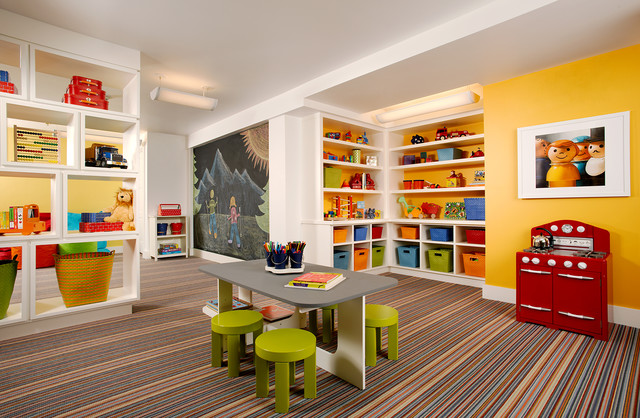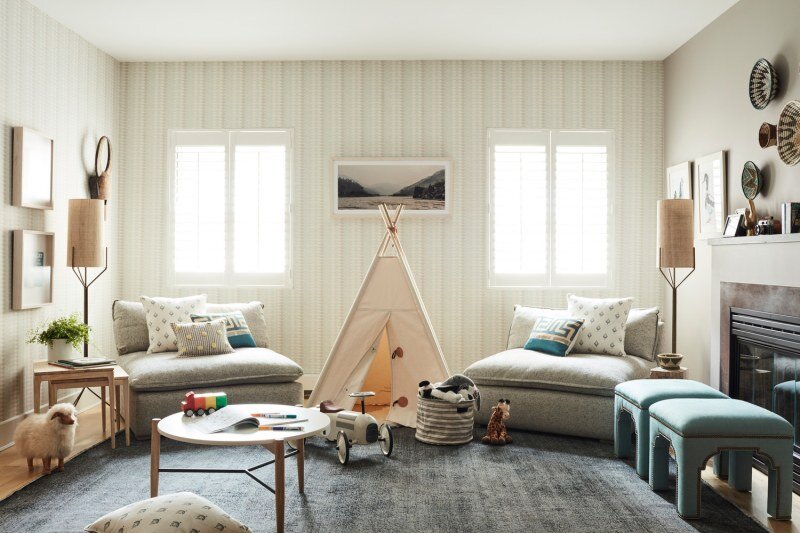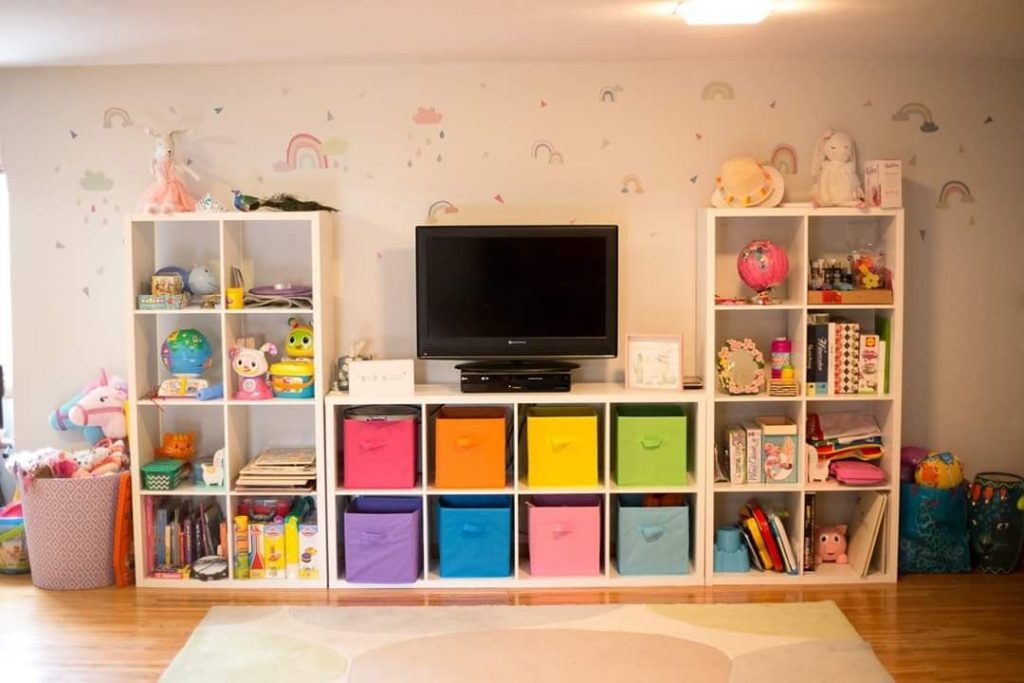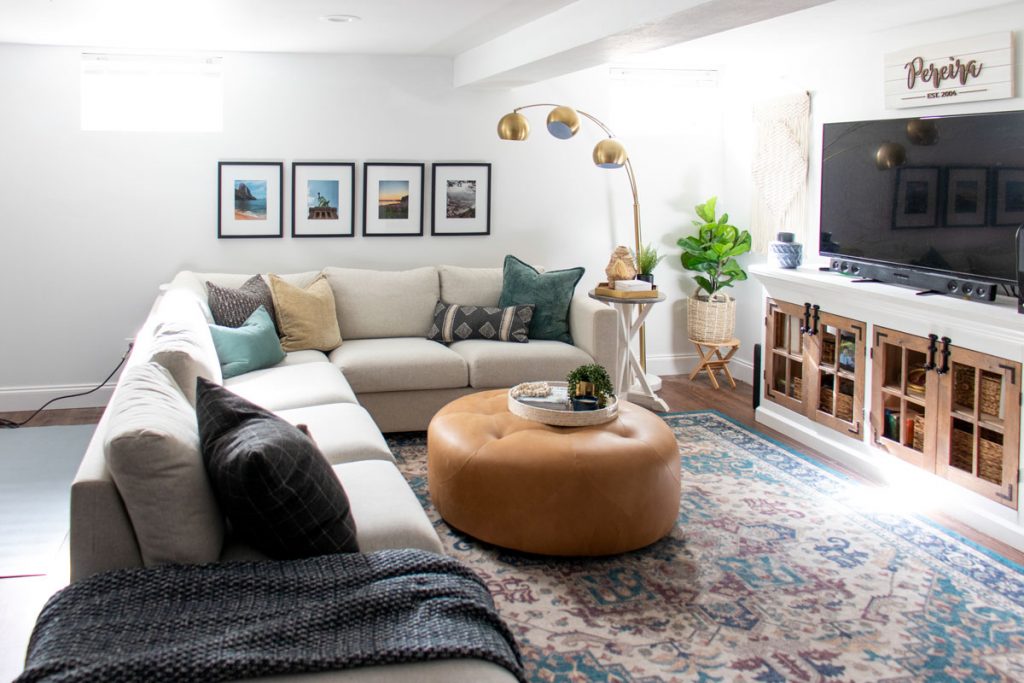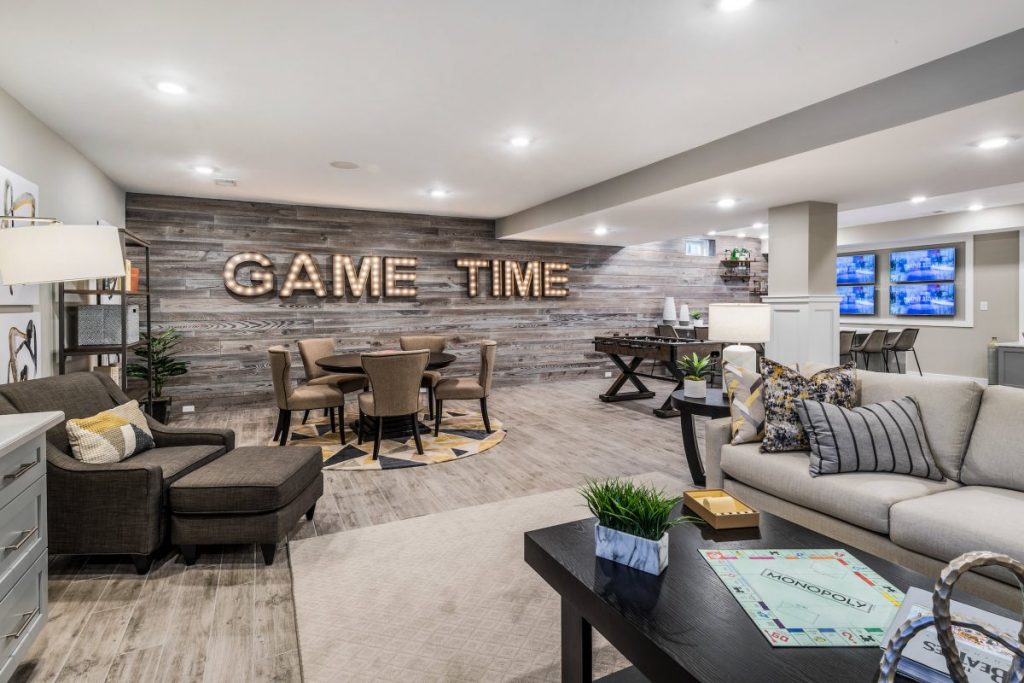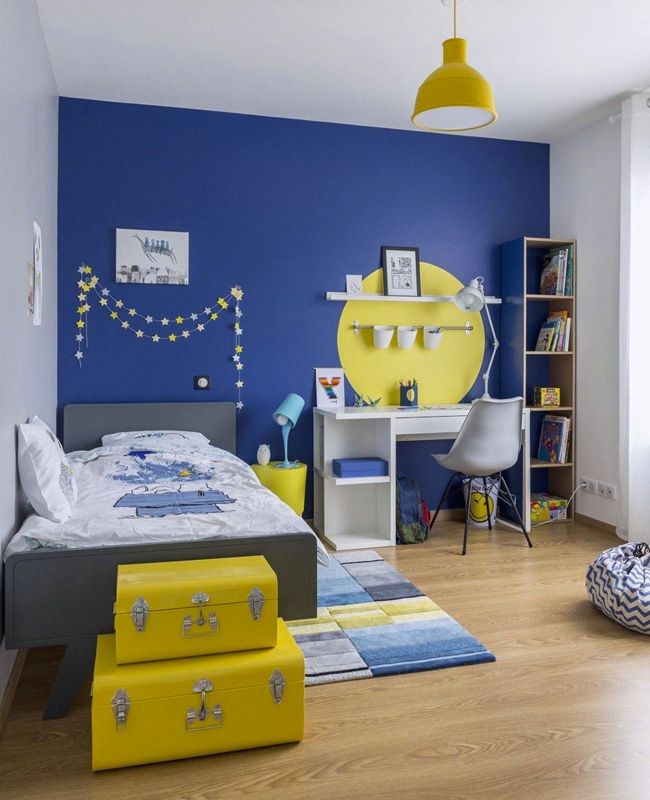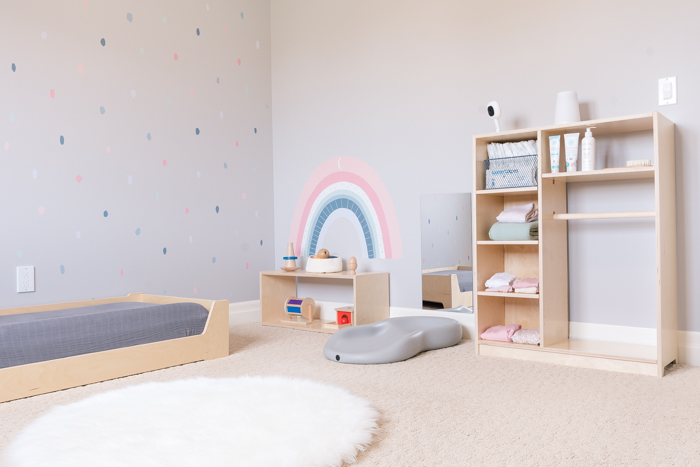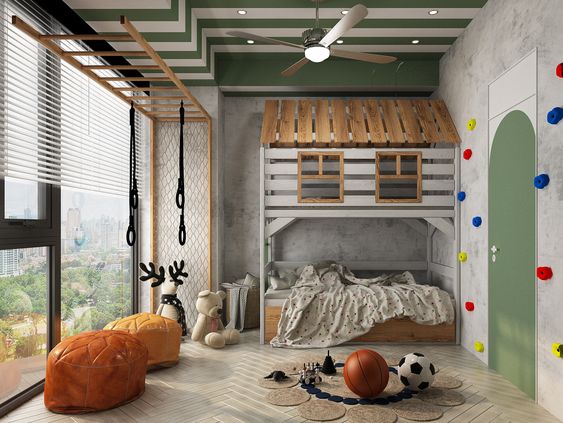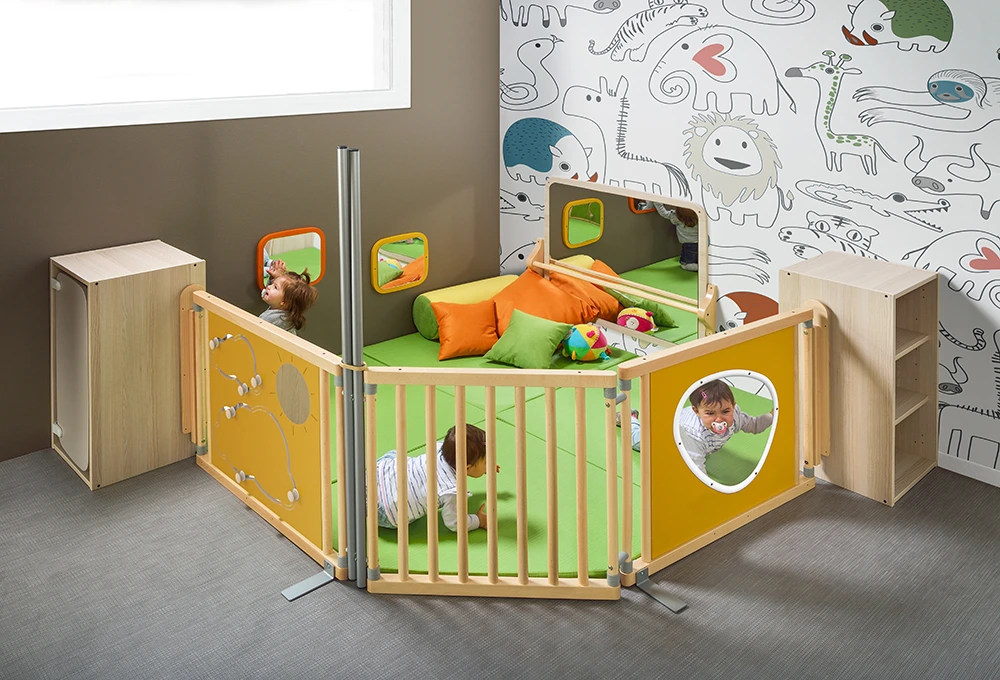Kid-friendly Interior Design
A kid-friendly home is like a warm and cozy cocoon where children can grow and thrive. It’s a place where they can be free to explore, play, and imagine without fear or worry.
A home that is designed with children in mind is not just a collection of furniture and home decor but a reflection of love and care.
Designing a new home that is both stylish and functional can be a challenge, especially when you have children. A kid friendly interior design requires careful consideration of various factors, such as safety, durability, and functionality, without sacrificing aesthetics.
Whether you are designing a nursery, dining room, kid-friendly living room, playroom, or kid’s bedroom, using a kids room design tool can make the process much easier. It is essential to create a space that encourages your child’s growth and development while also reflecting their unique personality and interests.
In this article, we will explore some tips to design a child-friendly interior that is both practical and stylish, ensuring that your child feels comfortable, safe, and happy in their space.
Also, Read: 10 Best Teen Bedroom Ideas
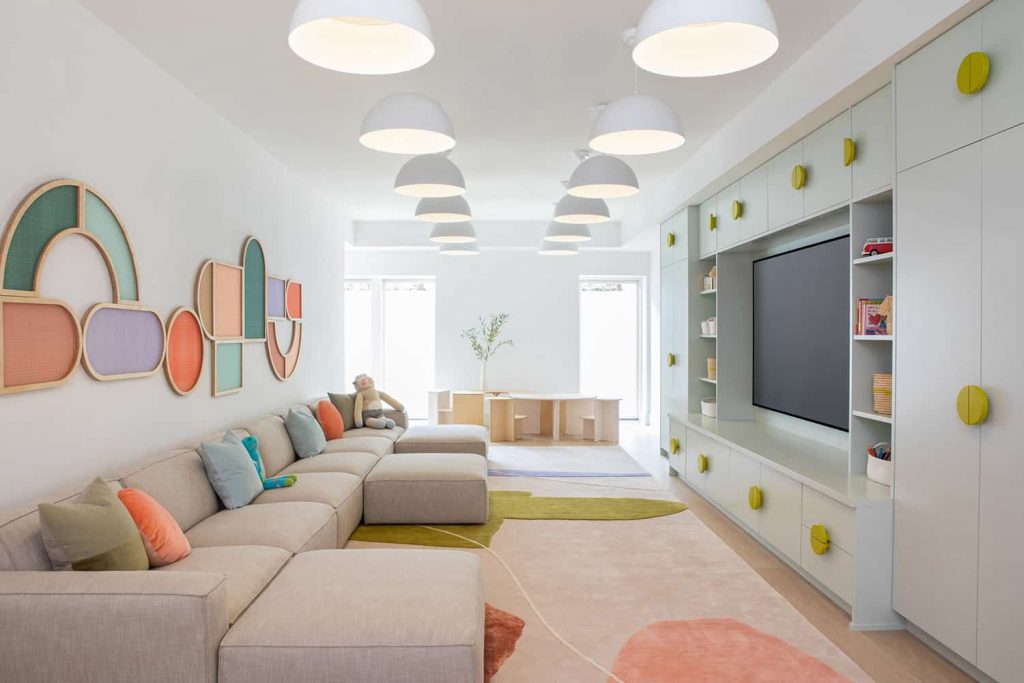
Image Credit: onekindesign.com
Importance of a Kid-Friendly Home
A kid friendly space is a place where children learn new skills and grow into confident and capable individuals.
Most importantly, it’s a space where families can come together and bond over shared experiences and memories. Here are more reasons behind the importance of a kid-friendly home:
1. Safety
Due to their inherent curiosity and sense of adventure, children are more likely to have accidents and suffer injuries.
A kid-friendly home offers a secure setting that reduces the possibility of mishaps and ensures kids can play and explore without getting hurt.
2. Emotional well-being
For kids to feel safe and content, they need a warm and secure environment, and a kid-friendly home can contribute to that. It creates a feeling of safety and familiarity, which can support the emotional stability and well-being of children.
3. Development
Play and exploration are important components of a child’s learning and development, and a kid-friendly home helps with that.
In a kid-friendly environment, children have ample opportunities to engage in play, imagination, and creativity, which supports their cognitive, social, and emotional growth.
4. Family bonding
A family-friendly home can unite the whole family by providing a place for shared experiences and activities. This can aid in the formation of strong relationships and memories that will last a lifetime.
Recommended Read: How To Design A Kitchen?
Image Credit: houzz.com
9 Tips To Design Kid-Friendly Interiors for Your Home
Designing a kid-friendly interior can be a challenging task, but it’s essential to create a space that is safe, functional, and inviting for children. A well-designed kid-friendly space can promote play, creativity, and relaxation while also being easy to clean and maintain.
Here are some tips for designing kid-friendly interiors:
1. Safely Snuggle in with Comfortable Furniture
Children spend a lot of time sitting, playing, and lounging on the furniture, so it’s important to choose pieces that are both comfortable and safe.
For example, look for a dining table with rounded edges and corners to prevent injuries and avoid pieces with sharp metal or wooden components.
When selecting seating, consider upholstery pieces with cushions and padding for added comfort, and choose fabrics that are easy to clean and maintain.
Additionally, look for furniture pieces that are appropriately sized for children, such as small chairs and coffee tables that are easy for kids to use and move around.
When designing a kid-friendly interior design, you can also consider adding a soft area rug, poufs, or comfortable bean bag chairs for added comfort and relaxation.
Also, Read: 25 Types of Rooms in A House
Image Credit: rockabyemommy.com
2. Stash Things Away in Style
Children tend to accumulate a lot of toys, books, and other items, and without proper storage solutions, these items can quickly clutter up a space. So you might want to look for furniture pieces with built-in storage, such as bookcases, cabinets, and storage ottomans.
Try adding wall shelves or floating bookshelves to help maximize vertical space and keep items off the floor.
Select storage containers that are easy to use and access for children, and choose durable materials that are easy to clean. Labeling storage containers can also help keep items organized and easy to find.
Additionally, consider adding storage solutions specifically designed for children, such as toy chests or storage benches with a seat that doubles as a lid.
By incorporating functional storage solutions into your kid-friendly interior design, you can help keep clutter under control and create an organized and inviting space.
Quick Read: 9 Ways To Incorporate Modern Interior Design Style In Your Home
Image Credit: pinterest.com
3. Blend Safety with Classy Fabrics
Children are naturally curious and love to explore, touch, and play with everything they see, so it’s important to choose materials that can withstand wear and tear, stains, and spills.
When selecting furniture, look for pieces made from durable materials such as wood or metal rather than flimsy plastics or particleboard.
Consider finishes that are easy to clean and maintain, such as smooth surfaces that can be wiped down with a damp cloth. Similarly, when choosing upholstery or fabrics, opt for materials that are stain-resistant and easy to clean, such as leather, microfiber, or outdoor fabrics.
Avoid fabrics that are delicate or easily damaged, such as silk or velvet. Additionally, consider the safety of the materials – for example, avoid materials that contain harmful chemicals or toxins.
Also, Read: 10 Ways To Add Eclectic Design to Your Home
Image Credit: shadesofblueinteriors.com
4. Consider Anti-stomping Floors
Children can be tough on floors, with their running, jumping, and playing causing wear and tear over time. So it makes sense to look for flooring options that are durable and easy to clean, such as hardwood, vinyl, or tile.
Hardwood floors are a popular choice for their durability and timeless look, but they can be prone to scratching and denting. Hence, it’s important to choose a durable hardwood option or add area rugs to protect high-traffic areas.
Vinyl and tile are also popular options for their durability and water-resistant properties, making it easy to clean up spills and messes.
When selecting flooring, consider the safety of the materials as well — for example, avoid materials that are slippery when wet or have sharp edges or corners that could cause injury.
Also, Read: 15 Best Master Bedroom Makeover Ideas
Image Credit: tollbrothers.com
5. Choose Vibrant Shades of Fun
Choosing a suitable color palette is an important aspect of a kid friendly interior design. Bright, bold colors can be stimulating for children, but they can also be overwhelming and overstimulating.
Balance is the key. Or you could consider a softer, more calming color palette with pops of brighter colors for accents.
Neutral colors such as white, beige, and grey provide a calming and minimalist backdrop to help children relax and feel at ease. Soft pastels, such as pale blue or pink, can also be a good choice for creating a soothing atmosphere.
When choosing brighter colors, opt for accents such as throw pillows, wall art, or rugs rather than large pieces of furniture or wall colors. This allows for flexibility in changing the accents as children’s interests and preferences evolve.
Moreover, consider the psychological effects of color — for example, green can be calming and grounding, while yellow can be energizing and uplifting in a kid-friendly space.
Recommended Read: 15 Best Home Design Games To Boost Your Creativity
Image Credit: pinterest.com
6. Invest in Forgiving Rugs
Kid-friendly interior design ideas involve considering the durability and practicality of materials used in the space. Children are prone to cause spills, stains, and accidents, and a washable material that can withstand these mishaps will save new parents a lot of stress and frustration.
Forgiving rugs are made of materials resistant to spills and stains, such as synthetic fibers like nylon or polyester. They are also designed to hide dirt and grime, making them easy to maintain with regular vacuuming and spot cleaning.
Washable rugs take ease of use a step further as they can be washed in a machine or hosed down outside, which is especially useful for larger spills or messes.
Additionally, they also add an extra layer of cushion – read safety – for your little ones who love to crawl around and play on the floor.
Also, Read: 20 Ways To Add Color To Your Home Without Painting
Image Credit: montessorimethod.com
7. Create an Inclusive Space
When designing kid-friendly spaces, accessibility is a key factor. This involves ensuring that the space is easy for children to navigate and use and that everything they need is within reach.
One way to improve accessibility is to create designated areas for different activities, such as a play area with toys, a reading nook with books, and a craft table with art supplies. This helps children understand where things belong and encourages them to be independent and self-sufficient.
Another way to improve accessibility is to store items at child-friendly heights, such as placing toys and books on low shelves or providing step stools for children to reach higher items.
Plus, a kid-friendly space should be free of hazards and obstacles. You want to avoid having loose cords lying around and keep consumable items out of reach.
Finally, consider the accessibility of the overall design, such as making sure that doorways and walkways are wide enough for strollers and wheelchairs if necessary.
Also, Read: 14 Amazing Front Door Ideas
Image Credit: homedit.com
8. Let the Sunshine In
Natural light can make a big difference in creating a comfortable and inviting kid-friendly space. Natural light has many benefits — it can boost mood, improve productivity, and even help regulate sleep patterns.
Natural light can also make a kid-friendly space feel larger and more open, which is especially important for smaller homes or apartments.
To let natural light in, consider using light-colored window treatments that allow light to filter through, such as sheer curtains or blinds. Avoid heavy drapes or dark-colored curtains that can block natural light and make a space feel cramped.
Another strategy is to position furniture near windows to take advantage of natural light or to use reflective surfaces such as mirrors to bounce light around the room.
If your home doesn’t have many windows or gets limited natural light, consider using artificial lighting, such as floor lamps or table lamps, to create a warm and inviting atmosphere.
Also, Read: 15 Best Ways To Increase Natural Light In Your Home
Image Credit: pinterest.com
9. Create Boundaries for Little Explorers
Safety is always a top priority when designing a kid friendly space. One of the best ways to ensure the safety of young children is to use baby gates to create boundaries and keep them away from potentially dangerous places, such as staircases, fireplaces, and kitchens.
Choosing the right type of gate is important — there are pressure-mounted gates, hardware-mounted gates, and freestanding gates — and each type has its strengths and weaknesses.
It’s important to measure carefully before purchasing a gate to ensure a proper fit and to use gates consistently to maintain their effectiveness. Baby gates don’t have to be an eyesore – there are many stylish and attractive options available that can complement your home decor.
Plus, you can use baby gates to create play areas and separate spaces for children, such as a safe play area in a living space or a separate section of a kid’s room for a baby’s crib.
Also, Read: 10 Best Alternative Formal Living Room Ideas
Image Credit: boutique.mathou.com
Celebrate Your Children: Consider These Things While Designing for Kids
Designing a space for your children can be a fun and rewarding experience, but it’s important to showcase their personality and individuality. Here are some hacks that you can adopt while designing a kid-friendly house to celebrate your children:
1. Personalization
Celebrate your children by designing a space they can truly call their own. Encourage your children to pick colors, themes, and decorations they like so they can be involved in the design process.
2. Sensory Elements
Incorporate sensory elements into the home design to promote your child’s sensory development. For example, you can add soft rugs or blankets, scented candles, or items with interesting textures, such as bean bags or textured pillows.
3. Interactive Walls
Use interactive wall elements such as chalkboards, whiteboards, and magnetic boards to create a fun and engaging environment. Your child can draw, write, and play with magnets on these walls, adding an element of creativity and imagination to the space.
4. Flexibility
Children’s preferences and needs change quickly, so it’s important to design an environment that accommodates their changing needs. You can easily makeover the space by using modular furniture or adjustable shelves.
5. Playful Lighting
Conclusion
By considering these things while designing or renovating a family-friendly home for little ones, you can create a space that is safe, functional, and reflective of your child’s unique personality and interests.
In case you are still stuck on design inspiration and want a little professional help, you can design a safe space for your children using Foyr Neo. Sign up for a free trial now!
Also, if you enjoyed reading this article, you might like ‘15 Best Gender Neutral Nursery Ideas and Themes.’
FAQs
1. How to design a kid friendly home?
You can design a kid-friendly home by including functional storage, choosing durable materials, and creating a playful and colorful atmosphere.
2. What are the 7 principles of interior design?
The 7 principles of interior design are unity, balance, rhythm, emphasis, contrast, details, and scale and proportion.
3. How do you style a house with kids?
You can style a house with kids by incorporating durable materials, choosing appropriate flooring, and letting the natural light in.
4. What are the four types of interior design?
The four types of interior design are modern, traditional, minimalist, and industrial.









